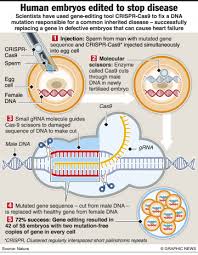
Breaking News
 Gavin Newsom Doubles Down on Woke: 'I Want to See Trans Kids' (VIDEO)
Gavin Newsom Doubles Down on Woke: 'I Want to See Trans Kids' (VIDEO)
 CFTC Opens Door for Spot Bitcoin and Crypto Trading in U.S. Markets
CFTC Opens Door for Spot Bitcoin and Crypto Trading in U.S. Markets
 Delivery Theft And Scams Are Reshaping Holiday Shopping Decisions In 2025
Delivery Theft And Scams Are Reshaping Holiday Shopping Decisions In 2025
 Green Rush Reloaded: Pot Stocks Soar On Trump Push For Rescheduling
Green Rush Reloaded: Pot Stocks Soar On Trump Push For Rescheduling
Top Tech News
 Build a Greenhouse HEATER that Lasts 10-15 DAYS!
Build a Greenhouse HEATER that Lasts 10-15 DAYS!
 Look at the genius idea he came up with using this tank that nobody wanted
Look at the genius idea he came up with using this tank that nobody wanted
 Latest Comet 3I Atlas Anomolies Like the Impossible 600,000 Mile Long Sunward Tail
Latest Comet 3I Atlas Anomolies Like the Impossible 600,000 Mile Long Sunward Tail
 Tesla Just Opened Its Biggest Supercharger Station Ever--And It's Powered By Solar And Batteries
Tesla Just Opened Its Biggest Supercharger Station Ever--And It's Powered By Solar And Batteries
 Your body already knows how to regrow limbs. We just haven't figured out how to turn it on yet.
Your body already knows how to regrow limbs. We just haven't figured out how to turn it on yet.
 We've wiretapped the gut-brain hotline to decode signals driving disease
We've wiretapped the gut-brain hotline to decode signals driving disease
 3D-printable concrete alternative hardens in three days, not four weeks
3D-printable concrete alternative hardens in three days, not four weeks
 Could satellite-beaming planes and airships make SpaceX's Starlink obsolete?
Could satellite-beaming planes and airships make SpaceX's Starlink obsolete?
Crispr gene therapy fixes disease in a human embryo

A single letter mistake in the gene for FBN1, which codes for the fibrillin protein, can cause a ripple effect of problems—from loose joints to weak vision to life-threatening tears in the heart's walls. Starting with healthy eggs and sperm donated by a Marfan syndrome patient, the team of researchers from Shanghai Tech University and Guangzhou Medical University used an IVF technique to make viable human embryos. Then they injected the embryos with a Crispr construct known as a base editor, which swaps out a single DNA nucleotide for another—in this case, removing an "A" and replacing it with a "G". They kept the embryos alive for another two days in the lab, long enough to run tests to see how well the editing worked. Sequencing revealed that all 18 embryos had been edited, with 16 of the embryos bearing only the corrected version of the FBN1 gene. In two of the embryos, additional unwanted edits had also taken place.

 First totally synthetic human brain model has been realized
First totally synthetic human brain model has been realized Mach-23 potato gun to shoot satellites into space
Mach-23 potato gun to shoot satellites into space

